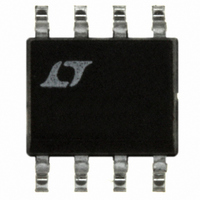LT1208CS8#PBF Linear Technology, LT1208CS8#PBF Datasheet - Page 6

LT1208CS8#PBF
Manufacturer Part Number
LT1208CS8#PBF
Description
IC OP-AMP HI-SPEED DUAL 8SOIC
Manufacturer
Linear Technology
Datasheet
1.LT1208CS8PBF.pdf
(12 pages)
Specifications of LT1208CS8#PBF
Amplifier Type
General Purpose
Number Of Circuits
2
Slew Rate
400 V/µs
Gain Bandwidth Product
45MHz
Current - Input Bias
4µA
Voltage - Input Offset
1000µV
Current - Supply
7mA
Current - Output / Channel
40mA
Voltage - Supply, Single/dual (±)
5 V ~ 30 V, ±2.5 V ~ 15 V
Operating Temperature
0°C ~ 70°C
Mounting Type
Surface Mount
Package / Case
8-SOIC (3.9mm Width)
Lead Free Status / RoHS Status
Lead free / RoHS Compliant
Output Type
-
-3db Bandwidth
-
Available stocks
Company
Part Number
Manufacturer
Quantity
Price
LT1208/LT1209
TYPICAL PERFOR
Layout and Passive Components
As with any high speed operational amplifier, care must be
taken in board layout in order to obtain maximum perfor-
mance. Key layout issues include: use of a ground plane,
minimization of stray capacitance at the input pins, short
lead lengths, RF-quality bypass capacitors located close
to the device (typically 0.01 F to 0.1 F), and use of low
ESR bypass capacitors for high drive current applications
(typically 1 F to 10 F tantalum). Sockets should be
avoided when maximum frequency performance is re-
quired, although low profile sockets can provide reason-
able performance up to 50MHz. For more details see
Design Note 50. The parallel combination of the feedback
resistor and gain setting resistor on the inverting input
combine with the input capacitance to form a pole which
can cause peaking. If feedback resistors greater than 5k
are used, a parallel capacitor of value
should be used to cancel the input pole and optimize
dynamic performance. For unity-gain applications where
a large feedback resistor is used, C
or equal to C
6
A
60
55
50
45
40
35
30
25
20
PPLICATI
C
Gain-Bandwidth and Phase Margin
vs Supply Voltage
0
F
R
G
GAIN BANDWIDTH
PHASE MARGIN
5
SUPPLY VOLTAGE (±V)
IN
C
IN
.
/R
O
10
F
U
S
15
I FOR ATIO
T
U
A
W
= 25°C
1208/09 G19
A
20
U
F
62
60
58
56
54
52
50
48
46
should be greater than
CE
W
C
HARA TERISTICS
600
500
400
300
200
100
Slew Rate vs Supply Voltage
0
U
T
A
A
V
= 25°C
= –1
C
5
SUPPLY VOLTAGE (±V)
–SR
Capacitive Loading
The LT1208/LT1209 amplifiers are stable with capacitive
loads. This is accomplished by sensing the load induced
output pole and adding compensation at the amplifier gain
node. As the capacitive load increases, both the bandwidth
and phase margin decrease so there will be peaking in the
frequency domain and in the transient response. The
photo of the small-signal response with 1000pF load
shows 50% peaking. The large-signal response with a
10,000pF load shows the output slew rate being limited by
the short-circuit current. To reduce peaking with capaci-
tive loads, insert a small decoupling resistor between the
output and the load, and add a capacitor between the
output and inverting input to provide an AC feedback path.
Coaxial cable can be driven directly, but for best pulse
fidelity the cable should be doubly terminated with a
resistor in series with the output.
10
+SR
15
1208/09 G20
20
0.001
0.01
10
Total Harmonic Distortion
vs Frequency
T
V
R
A
A
OUT
L
A
V
= 25°C
= 500
V
= –1
= 1
= 3V
100
RMS
FREQUENCY (Hz)
1k
10k
1208/09 G21
100k














